|
April 1933 Radio-Craft
 [Table
of Contents] [Table
of Contents]
Wax nostalgic about and learn from the history of early electronics.
See articles from Radio-Craft,
published 1929 - 1953. All copyrights are hereby acknowledged.
|
Some of the earliest examples of
communications via light waves include signaling systems used by mariners to send
and receive simple coded messages in ship-to-shore and ship-to-ship modes. Doing
so involved candles or bonfires, depending on how far the signals needed to be sent.
Costal lighthouses have served an optical communications function for centuries.
Even Paul Revere relied on optical communications from the Old North
Church in Boston during his "Midnight Ride" to warn colonists of the impending British
invasion - "One [lamp] if by land, and two [lamps] if by sea." In the 1930s, Elman
B. Myers designed and exhibited the first widely publicized light wave communication
system that modulated a powerful mercury vapor lamp (a la many street lights) with
information provided by a low power source. A photocell on the receiving end captured
the optical energy and converted back to baseband audio. Columbia Broadcasting System
(CBS) studios sponsored the project for building-to-building radio show transmission.
See Editorial: Radio-Light,
June 1945 Radio-Craft
The Radiolight "Talking Beam"
Elman B. Myers*
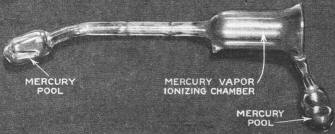
Fig. A - Photograph of the actual lamp used by Mr. Myers
in his astounding experiments.
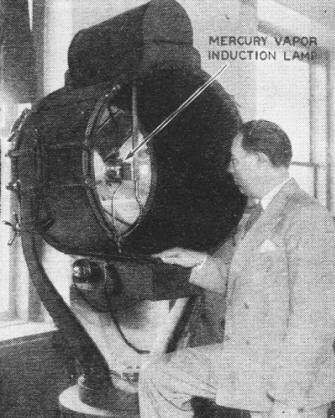
Fig. B - Photograph of Mr. Myers alongside of the powerful
searchlight housing the mercury-vapor lamp. Note the ionizing coils.
The first published detailed description of the "light beam radio" program recently
broadcast over Columbia's national network. This new system utilizes a modulated
50 meter radio transmitter to produce a 375 mega-megacycle "cold-light" in a mercury
vapor induction ramp. Note the fields available for this communication system.
On the thirteenth anniversary of Vaughn de Leath's entry into radio broadcasting,
her regular program over the Columbia Broadcasting Company's nationwide network
was used to inaugurate a new method in radio communication. This new system is known
as a "Radio Light Beam."
We have all heard much about the early experimental methods of light beam communication,
and of more recent experiments with a 20 mile arc-light beam modulated by a 200
kw. transmitter; and now, through inven-tions in the Metal-Vapor Induction-Lamp
field, this method has been brought to the point where, with only about 1 kw. in
the transmitter, it will do all that a radio transmitter will do, but with a great
many of radio's disadvantages overcome, - in a manner which is commercially practicable.
The lamp that is the basis of this remarkable new method of communication is
pictured in Fig. A; it is sketched in Fig. 1. In the latter illustration
the coils L1, L2, and the condenser C1 form the output circuit of a standard, low-power
radio transmitter operating on 50 meters. The vaporizing coil L2 is coupled to the
larger chamber containing liquid mercury. By the correct coupling of L2 and this
mercury vaporizing chamber, mercury vapor is produced and seeks the upper or ionizing
chamber. Here the mercury vapor is ionized by the 6,000 kc. (50 meter) R.F. current
which circulates through the ionizing coil, L1, and produces a "cold light," of
a bluish-white color, having a frequency of 8,000 A.D., or 375 mega-megacycles.
Convection currents which are set up in the lamp carry mercury molecules to the
second or condensing chamber where they condense, due to coolness of the quartz
envelope, and form back into liquid mercury.
All that is necessary to modulate the lamp is to modulate the radio transmitter
in the conventional manner. All variations of the transmitter output are followed
with absolute fidelity by the mercury vapor lamp! In fact, the same light used in
the recent Radio Light Beam tests has been used to reproduce television pictures
of 60 lines, 72 elements wide, at 20 pictures per second. This proves that the light
will modulate 43,200 cycles per second, for the pictures produced were acclaimed
as perfect as the originals in the television studio! It will be seen, then, that
frequencies up to the limit of the audio band are well within its scope. Lamps that
have been operating 7,000 hours show no signs of fatigue, and it is believed that
the life of these tubes is extremely long.
Recent Demonstration
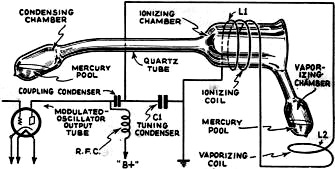
Fig 1 - Schematic circuit of the ionizing circuit of the new
lamp.
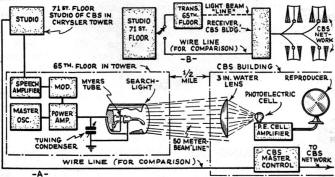
Fig. 2 - Block illustration of the complete system used
by CBS.
As Vaughn de Leath, 'way back in 1920, climbed the winding stairs of the old
World Tower to become the first radio artist of her sex, little did she realize
that thirteen years later she would inaugurate a new system of communication that
is bound to open up untold transmission bands. A remarkable coincidence is that
the author was at the controls of the De Forest radio transmitter which broadcast
her voice for the first time!
In Fig. 2A we have a sketch, and in 2B a block illustration, of the system
used January 19, 1933. Miss Vaughn de Leath and Freddie Berren's Orchestra furnished
the talent, in the observation room on the 71st floor of the Chrysler Tower in New
York City. The program was picked up in the regular way by engineers of the Columbia
Broadcasting system, and relayed to the 65th floor of the same tower to modulate
the "radio light beam." This beam of light was directed to the 16th floor of the
Columbia Broadcasting Building, about a half-mile away. At the receiving point the
light beam was picked up by a three-foot, water-filled lens and focused on a standard
photo-electric cell. The audio output was built up to loudspeaker volume, for a
group of reporters and interested spectators, and a relay line took part of the
audio to the master control room of the Columbia network where it was transmitted
to the ninety-odd stations of the CBS. A transmission line used for all remote pickups
was also installed between the 71st floor of the Chrysler Tower and the master control;
this permitted the sound of Vaughn de Leath's voice and the music of Freddie Berren's
Orchestra to be faded from light beam to wire as the announcer asked the radio audience
to try to detect any change in quality.
This was a severe test but the light-beam system was so faithful in reproduction
that reports from all over the country states that no difference in quality could
be detected.
Fields for Radio Light Beams
1. For any communication system up to fifty miles that has not been able to secure
a wave length from the Federal Radio Commission. 2. For a communication system between
engine and caboose on some of our one and four mile freight trains. 3. Telephone
and telegraph communication to and from moving passenger trains. A wide-open field.
4. In large industrial plants as a combination source of illumination and call system.
5. Shore-to-island and island-to-island telephone and telegraph communication, where
the price of a submarine cable would be too costly. 6. Communication between plane
and ground, and plane for the passengers who are not allowed the use of present
radio service, which is meant primarily for weather map data for the pilot. 7. Train
dispatching. 8. Grade crossing warnings. 9. Fire-boat dispatching. (The entire harbor
can be seen from the Chrysler Tower.) This service is now by radio, and these radio
channels could be relieved for other services. 10. Police services could be handled
much the same as air light-beacons. Constant communication from headquarters could
be maintained by talking on successive lights along our city streets. The dead spots
that now exist in radio areas may obviously be completely eliminated. 11. Communication
with large liners that sometimes have to wait hours to get through Quarantine. Two-way
service could be used and parties on the boats connected with the Bell Telephone
service and plane throughout the land. 12. Broadcasting paid advertising, similar
to our present radio advertising programs. The use of "black light" (invisible,
infrared rays filtered from the mercury light) would satisfy the City Fathers.
Figure B is an excellent view of the quartz lamp mounted in the Sperry searchlight
used in the recent broadcast. The vaporizing and ionizing coils can be plainly seen
around the lamp. This assembly is slung from the tuning condenser of the output
circuit. The entire tuned circuit and lamp can be moved back and forth in the focus
of the 24 in. parabolic mirror of the searchlight.
Figure C is a photo of the receiving equipment. The large lens was used to ensure
enough light even under the most adverse conditions. It was found to be very much
larger than necessary; a good signal could be picked up on a six-inch lens, at this
distance. A standard color-sensitive photoelectric cell, peaked in the blue region
of the color spectrum, was purchased from the American Photoelectric Corporation,
and was used to convert the audio modulations of the light beam into sound. This
audio signal was then sent by the regular wire line to the various stations of the
CBS network, and from there into the millions of homes throughout the United States
and Canada.
The distance over which this test was conducted was one of circumstance and not
choice. The one-half mile in most cases would not seem "commercial," but this happened
to be the distance between the two buildings. It was advantageous to use these two
points - the Chrysler Tower being the locus of our laboratory, and the Columbia
Building housing the CBS master control room, the main feed for the entire network.
Conservative estimates, based on measurements, have shown that distances up to 10
and 15 miles can be covered with no loss in quality.
With the intrinsic brilliance developed at the power now available, we produce
about 50,000 beam candle-power which is modulated 100%. Measurements are under way
at the present time to establish the field intensities of the beam in the New York
area. Work has been done in broad daylight with as good results as at night. Cell
rush caused by the great amount of sunlight falling on the photo-cell (also, "interfering"
rays, such as those of an electric-light sign, etc.), can be balanced out by a very
simple method used in all laboratories when accurate work is required.
As the driver or power-to-light converter is a standard radio transmitter, it
is possible to multiplex the beam by multiplexing the transmitter by any of the
well-known methods. It is possible to use heterodyne detection on the receiving
end as the carrier and its sidebands appears in the output of the vacuum-type photoelectric
cells. This means that the extreme sensitivity of this method of detection would
greatly increase the distance over which telegraphic communication can be carried
on, without increase in power at the transmitter.
A Light-Beam Radio Broadcast System
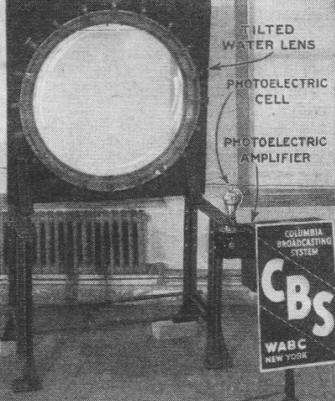
Fig. C - Photograph of the receiving lens and the photo-electric
cell used in the experiments.
When we stop to think of the tremendous bands of frequencies that are available
by this new method, we wonder why more effort has not been put on systems to relieve
the terrible congestion that now exists in the present broadcast channels. The frequency
of the ionizing current gives us one channel to work on. Now, if we take another
searchlight and change the ionizing frequency, say, 10 or 20 kc., we have another
channel - and so on for the entire broadcast band. Mercury has three spectral lines,
yellow, green, and blue. In the recent broadcast we used the blue line. This means
that we can have 600 searchlights using the 600 channels on the blue line, with
600 more channels on the yellow line of 600 other searchlights, and still 600 channels
on 600 more lights using the green line. At first this statement may seem wild,
but anyone who will take the time to investigate the system will find that things
have not been misrepresented.
This opens up a tremendous field for Service Men because one of the best ways
to take care of an apartment house would be to have one large reflector on the top
of the apartment and the audio developed in each cell could be "piped" down through
the building at 500 ohms and rented to each subscriber so he could plug the program
into the phonograph jack of his present broadcast receiver.
It is only necessary to stop and think for a moment to see the tremendous value
of this system to armies and navies, both in time of peace and in time of war.
In summing up this brief outline, it would seem that inventions in the metal-vapor
induction-lamp field have set a new mark for high quality communication systems.
The directive qualities may be used if desired, or the complete , 360 degree servicing
of any area by well-known lens systems. The horizon being the boundary of interference
between cities, together with an almost unlimited frequency response for television,
augurs well for this system of communication which will be bound to show startling
advances in the near future.
*President, Myers Electrical Research Corp.
Posted November 5, 2021
(updated from original post on 3/17/2015)
|














